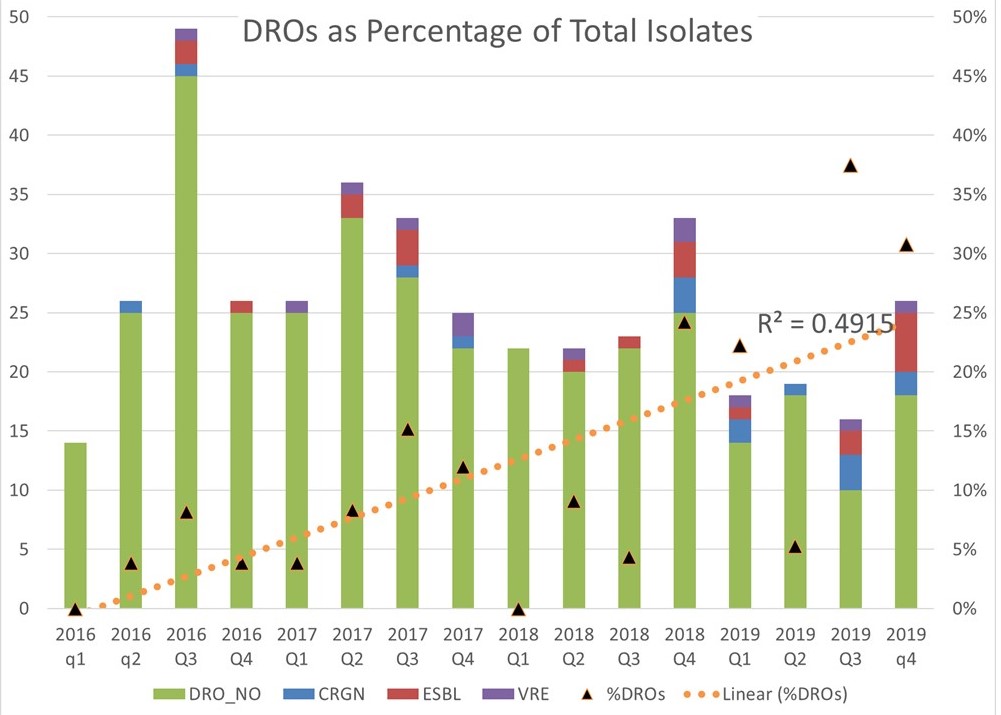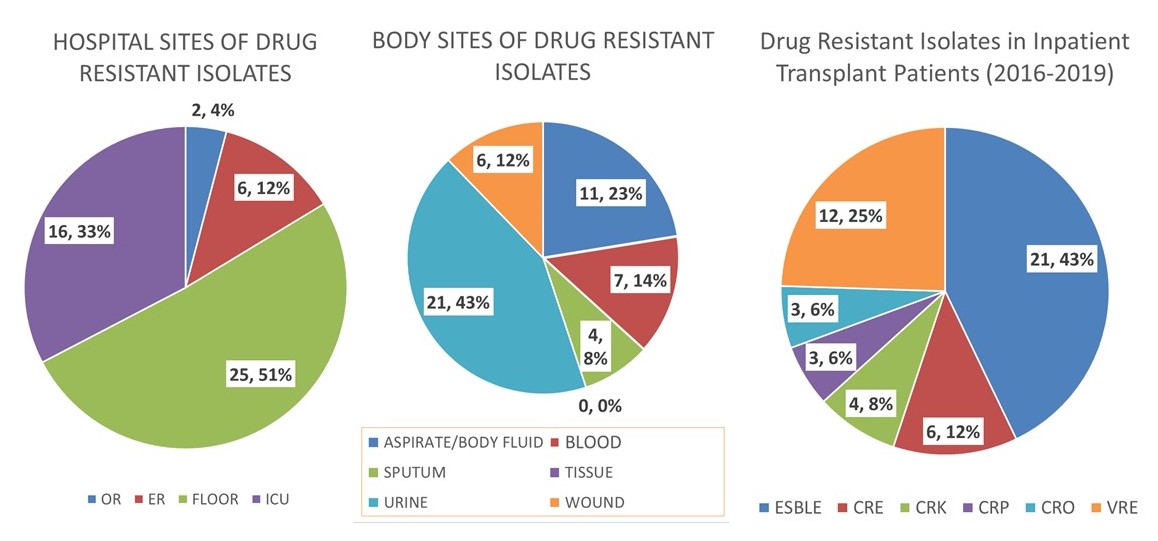Multi-drug Resistant Infections in Solid Organ Transplant Recipients, a New Era of Risk
L. A. Morais, D. Reynoso, A. Lea, M. Mujtaba, S. Merwat, R. Kulkarni, J. Fair, M. Kueht
University of Texas Medical Branch, Galveston, TX
Meeting: 2021 American Transplant Congress
Abstract number: 751
Keywords: Bacterial infection, Infection, Resource utilization, Surgical complications
Topic: Clinical Science » Infectious Disease » All Infections (Excluding Kidney & Viral Hepatitis)
Session Information
Session Name: All Infections (Excluding Kidney & Viral Hepatitis)
Session Type: Poster Abstract
Session Date & Time: None. Available on demand.
Location: Virtual
*Purpose: Antibiotic drug resistant organisms (DRO) [extended spectrum beta-lactamase (ESBL), vancomycin-resistant enterococcus (VRE), and carbapenem resistant bacteria (CRB)] are becoming more prevalent and pose a significant healthcare burden. As immunocompromised transplant patients are particularly susceptible to nosocomial infection, we sought to examine hospital-wide patterns of DRO in abdominal organ transplant recipients.
*Methods: All cultures from index- and re-admissions for abdominal organ transplant recipients at our institution from 2016 to 2019 were included in a retrospective analysis. The presence of DRO were analyzed to ascertain correlation among: patient age, organ, hospital site where the culture was drawn, length of stay (LOS), days since transplant, and infection rate.
*Results: A total of 571 culture isolates were obtained from 181 solid organ recipients during the study period, including 49 drug resistant bacterial isolates from 31 patients. Over the study period, DROs as a percentage of total cultures increased (R2=0.49, p<0.05). DROs were collected from non-ICU- (63%) nearly twice as frequently as from ICU-sites (33%). 59% of DRO cultures were obtained greater than 90 days after transplant. 1- and 3-yr survivals were similar for those that did and did not experience a DRO infection (DRO vs non-DRO: 1-yr, 90 vs 96%; 3-yr, 87 vs 91%, p=0.77). 30-day readmissions were more common in patients that developed a DRO (35 vs 58%, p<0.05).
*Conclusions: The incidence of DROs has been increasing and, although rare, now includes carbapenem resistance. Contrary to expected, DRO infections were detected more often in the non-ICU setting and often greater than 90 days post transplant. These data suggest that antibiotic stewardship is paramount and require hospital-wide vigilance.
To cite this abstract in AMA style:
Morais LA, Reynoso D, Lea A, Mujtaba M, Merwat S, Kulkarni R, Fair J, Kueht M. Multi-drug Resistant Infections in Solid Organ Transplant Recipients, a New Era of Risk [abstract]. Am J Transplant. 2021; 21 (suppl 3). https://atcmeetingabstracts.com/abstract/multi-drug-resistant-infections-in-solid-organ-transplant-recipients-a-new-era-of-risk/. Accessed December 14, 2025.« Back to 2021 American Transplant Congress


